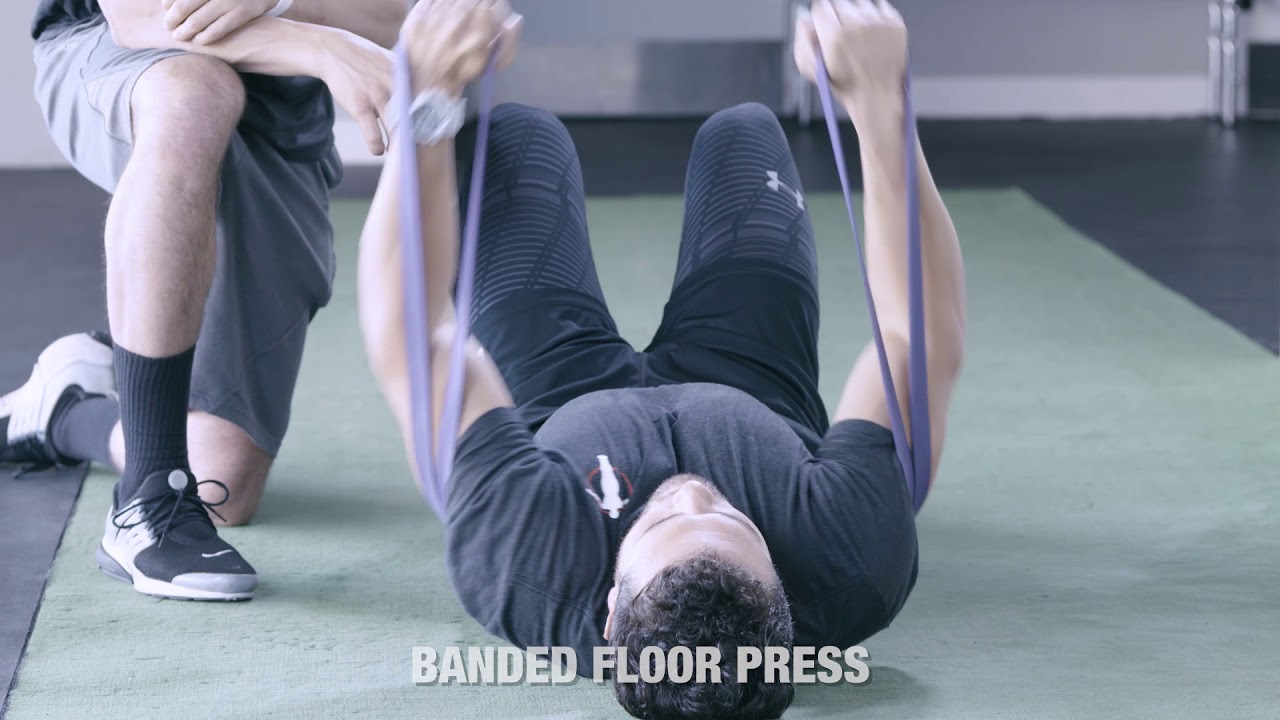5 Best Resistance Band Compound Exercises (with Pictures!)
Strength, endurance, and hypertrophy can all be increased with compound workouts, which engage numerous muscles at once. A terrific method to change one’s workout regimen is by using resistance bands for supplementary exercises - which also relieve joints from the repeated impact of heavy weights.
Resistance band compound workouts help develop lean mass while improving strength, mobility, and endurance. Compound exercises done with a resistance band include floor presses, push-ups, deadlifts, chin-ups, and lateral walks.
Different exercises can be performed at different angles to challenge the muscles in all different directions with resistance bands because they don't rely on gravity for resistance like weights do.
Resistance Bands for Strength Training
Exercise equipment like resistance bands - which are affordable, effective, portable, and durable - enables the practice of a variety of workouts whenever and wherever.
It is a piece of exercise equipment made up of elastic bands usually wrapped around the hands, wrists, forearms, and legs.

The use of a resistance band helps strengthen the muscles by providing resistance when stretched as the individual pulls against it with their extremities.
It is a great way to get a workout in without having to spend long hours at the gym as they come in all shapes and sizes, and can be used for different types of exercises.
A study has shown that resistance band training provides similar strength gains throughout the body as conventional weight training. Although weights are more effective for building muscle, resistance band workouts can develop muscle mass with proper load increases and sufficient time for muscles to recover properly.
They assist in increasing overall fitness and muscle mass without having to rely on gravity for resistance, thus engaging muscles in different ways.
They are particularly useful for individuals who have limited mobility or who want to add strength training to their workouts without having to spend money on expensive equipment.
Isolation vs Compound Exercises
The difference between isolation exercises and compound exercises is that isolation exercises isolate muscles in a specific area, while compound exercises involve multiple muscles and muscle groups working together.
The most common example of an isolation exercise is for the biceps brachii. The individual can do a biceps curl with either dumbbells or a barbell, both of which isolate the said muscle.
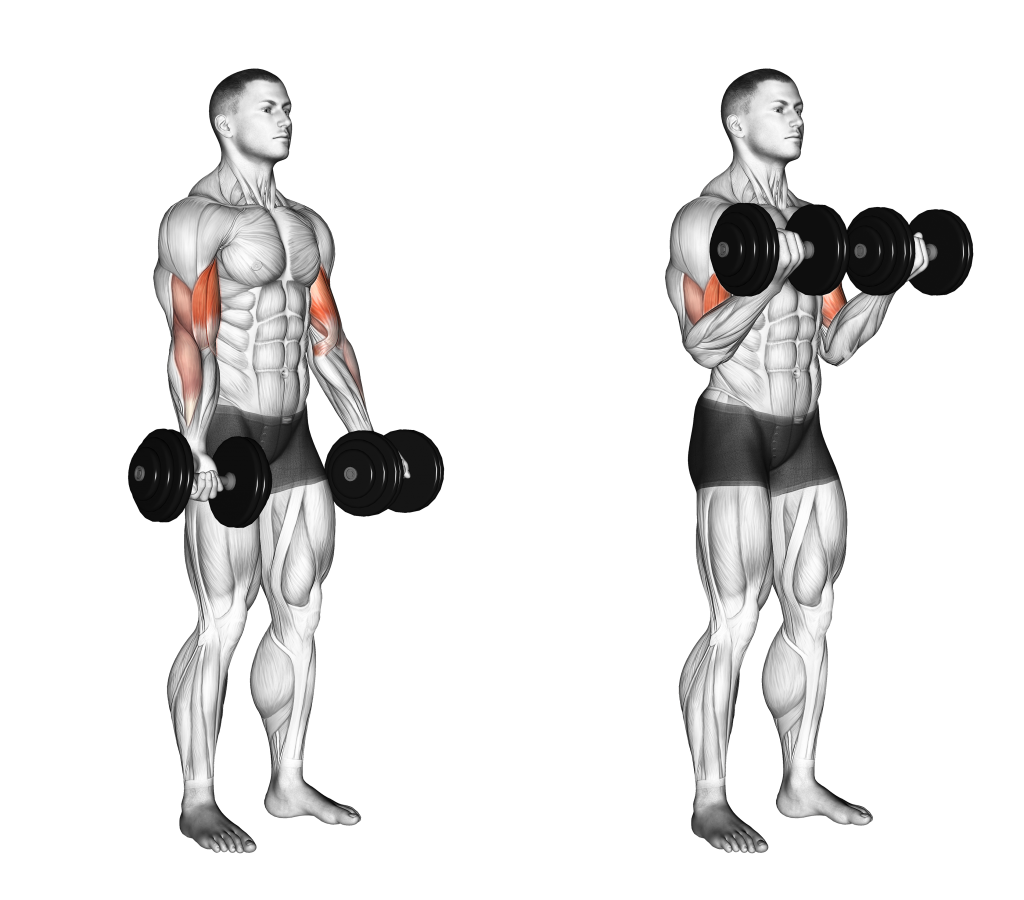
In contrast, performing compound exercises such as doing incline dumbbell bench presses will work all of the shoulder muscles, including the front deltoid, middle deltoid, rear deltoid, and teres major muscles.
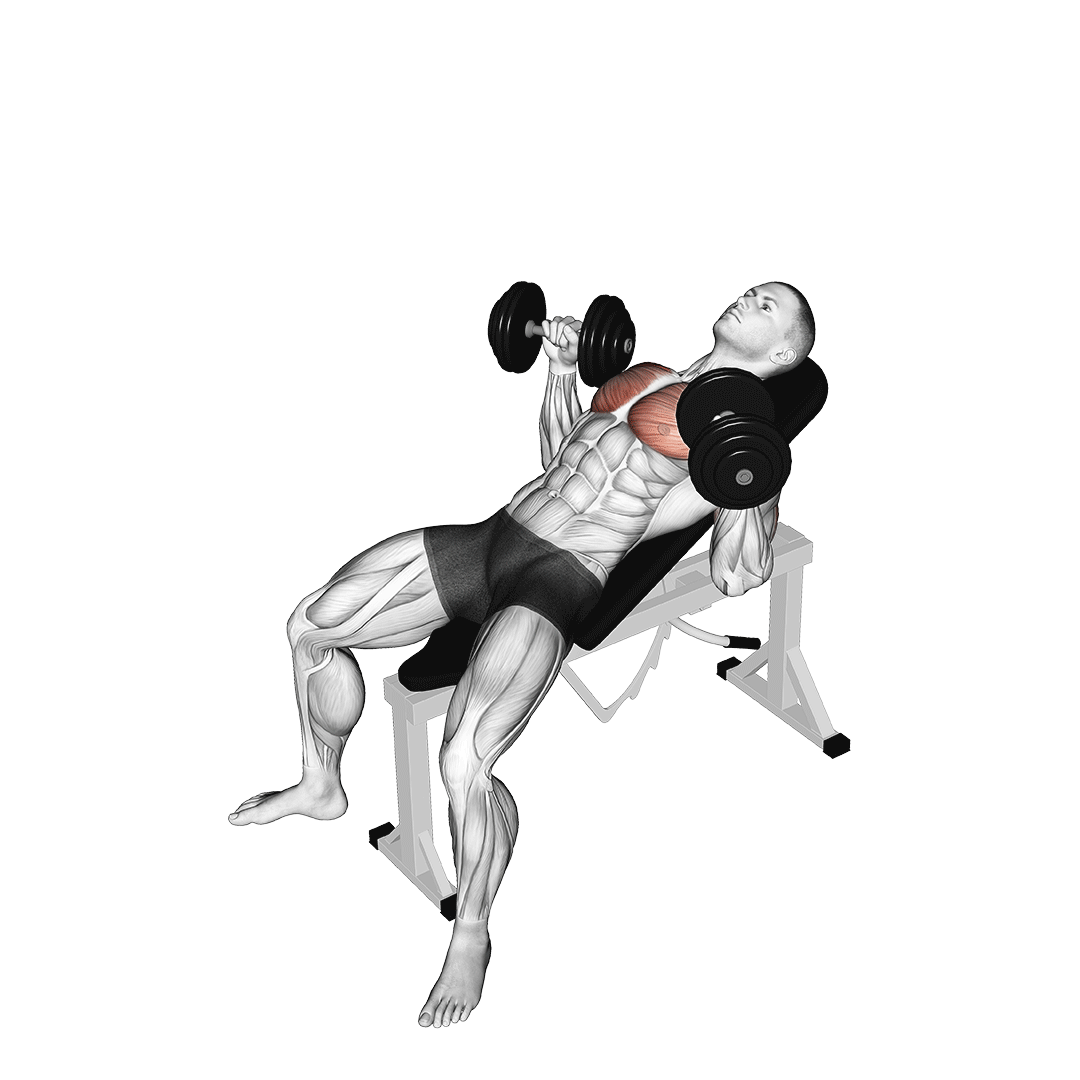
Compound exercises are usually done with weights that are heavier than an isolation exercise would be done with simply because they involve more muscle groups working together to lift the heavier weight than an isolated exercise could lift alone.
Examples of compound exercises include squats, deadlifts, and bench presses, among others.
These movements are considered to be compound exercises as they involve multiple muscle groups working together to lift a heavy load.
Resistance Band Compound Exercises
1. Resistance Band Floor Press
The floor press is a great exercise to work the chest and arm muscles. The movement is similar to a bench press but modified to accommodate the lack of equipment and maximize training. This exercise isolates the chest muscles as they raise and lower the upper arms while working them differently than with other pushups.
This resistance band exercise is excellent for a low-equipment workout or as a warm-up that engages the pecs and elbow extensors. With the upper arms in contact with the floor, place a resistance band beneath the shoulders and grasp both ends. Pull the band up with both arms, extending the elbows to straighten them out.
Return to the starting position by slowly flexing the elbows and lowering the hands. Repeat for the desired amount of reps to complete a set.
2. Resistance Band Push-ups
One of the most common and essential exercises for the upper body is push-ups. This compound exercise works almost all of the upper body's muscles while concentrating on the chest, shoulders, and triceps.
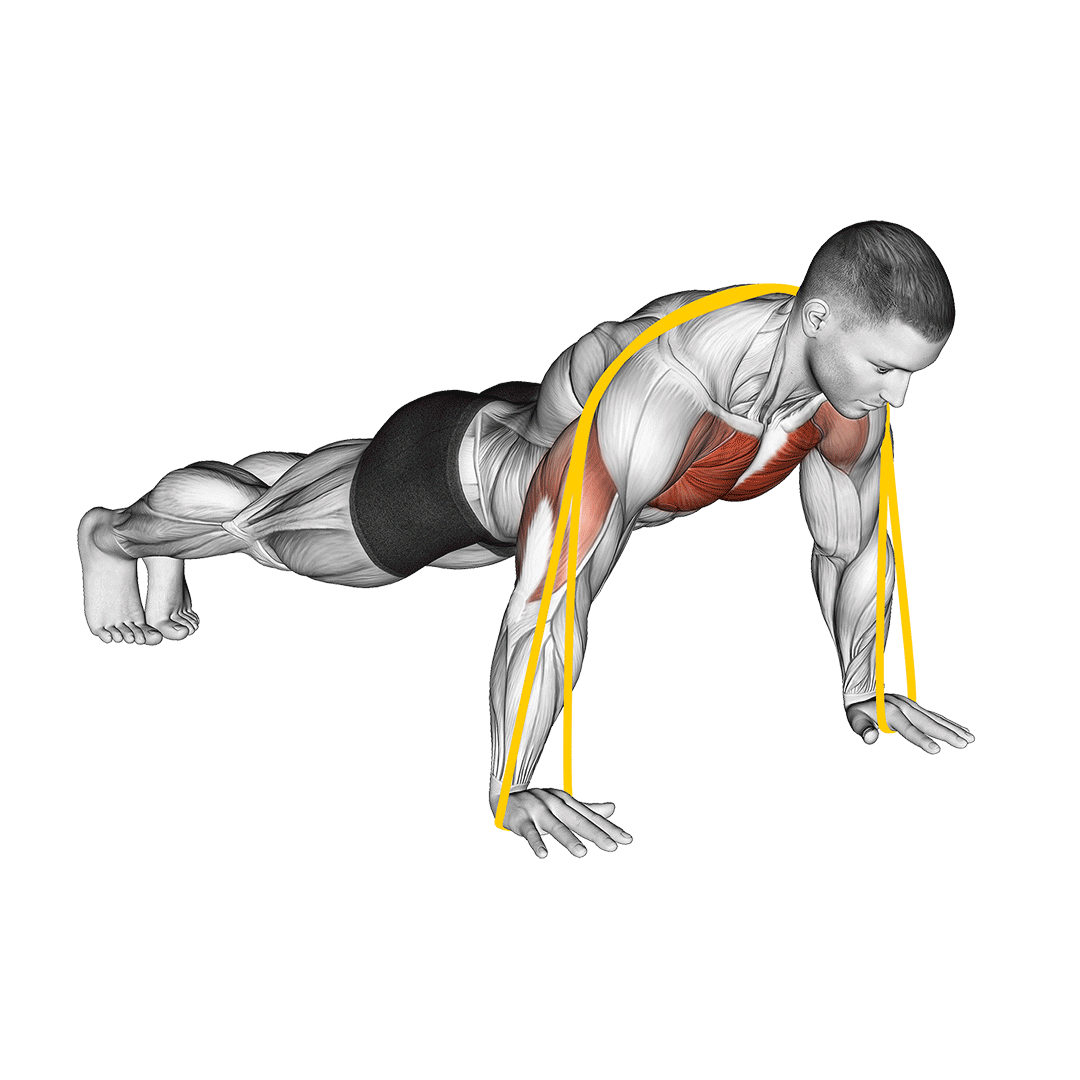
Eventually, push-ups might become routine, and may not feel as challenging to influence the recruitment of additional muscle fibers. Push-ups with additional resistance provided by resistance bands can be performed to scale up the movement.
To perform, kneel down, placing hands against the floor, then extend the legs as far as possible until positioned in a plank. Slowly lower the chest to the floor by flexing at the elbows and moving the upper arms backward until it is at the side of the body.
Upon reaching the bottom of the movement, press the chest back up to the starting position. The plank must be maintained throughout the whole movement. Repeat the motion until the desired number of repetitions is achieved.
3. Resistance Band Deadlift to Upright Row
Exercise progression is necessary to advance an exercise to a more difficult level. The use of resistance bands allows for exercise progression without using weights by switching out bands for stronger resistance.
When performing a deadlift with a resistance band, it is possible to add a row to engage more muscles and make the exercise more challenging. To perform this exercise, stand with the feet shoulder-width apart. Hold each end of the resistance band in each hand and suspend the middle of the band underneath both feet.
Hinge the hips with a slight bend in the knee while keeping the elbows extended. Use the hamstrings and glutes to thrust the hips forward and pull the body back to stand. In the upright position, continue to row the band by pulling upwards until the hands are at chest level, allowing the elbows to flare outwards.
4. Resistance Band Assisted Chin-ups
Chin-ups develop grip and pulling power in the upper body. The latissimus dorsi and upper back muscles can gain substantial amounts of muscle by way of chin-ups. However, it is a difficult maneuver to perform, let alone master. Furthermore, the inability to complete numerous reps of chin-ups without assistance occur often due to joint problems or simply lack of muscle power.
A resistance band-assisted chin-up is a terrific alternative for beginners who can not complete full sets of regular chin-ups. The ultimate purpose is to develop the muscles that work to perform a chin-up and eventually remove the assistance provided by the band.
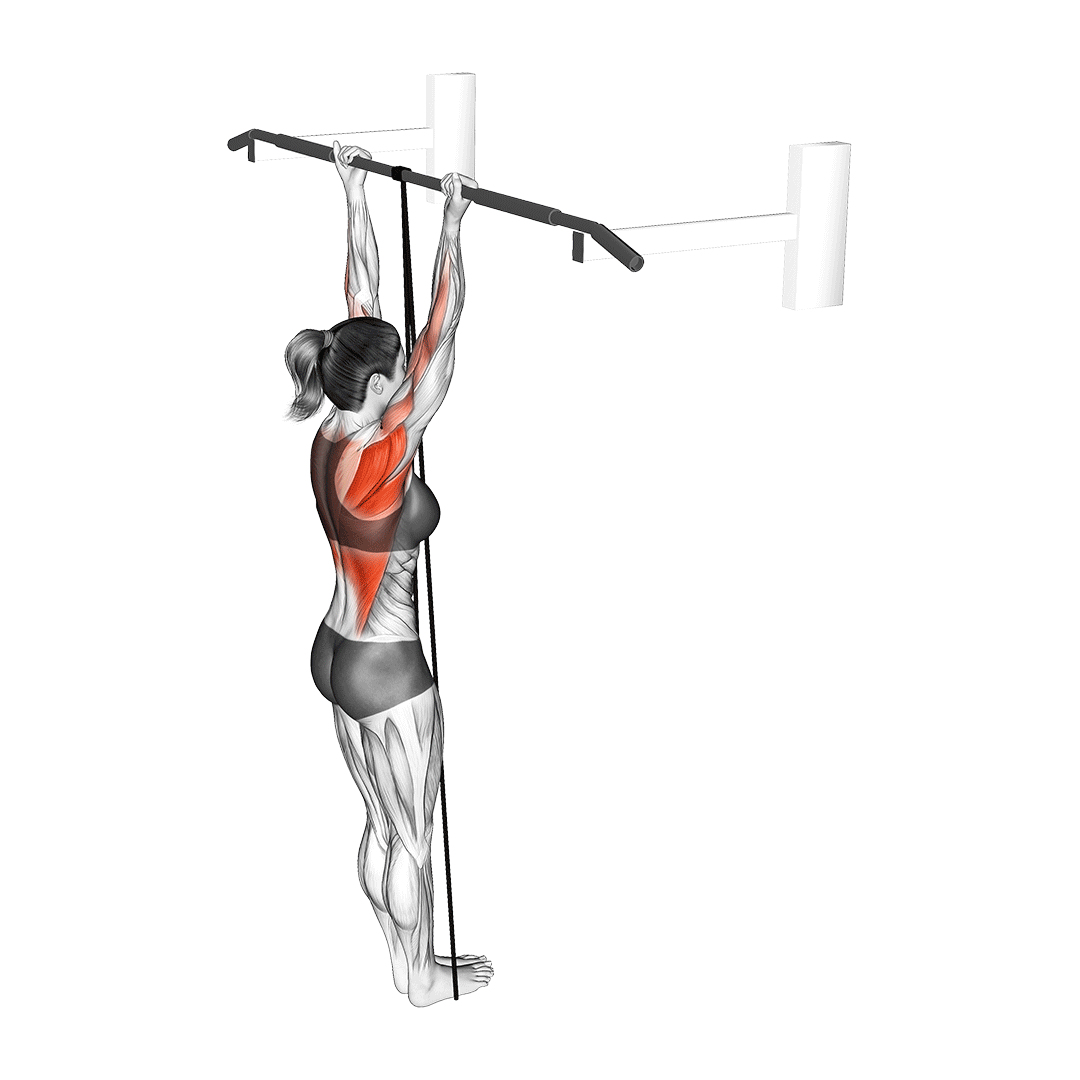
To perform, the band is fastened to the bar by looping one end of a large band around the chin-up bar and pulling the other end through the opening, as with a slip knot. Put one foot inside the band while holding the bar with an underhand grip at shoulder width.
Assume the dead hang by letting the body hang from the bar at arm’s length while keeping the shoulders down and away from the ears. Initiate pulling the body up by activating the lats, and driving the elbows down.
Draw the upper arms down firmly as the torso is elevated, and stick out the chest while pressing the shoulder blades back and down until the chin nearly clears the bar. Upon reaching the top of the movement, slowly descend with control, reset and repeat until a set is completed.
5. Banded X Lateral Walk
Banded lateral walks are excellent for engaging the glutes and establishing comfort in various planes of motion. Crossing the band over only adds more resistance so that the gluteal muscles are engaged more. Aside from strengthening the glutes, the X lateral walk increases core stability and bolsters frontal plane hip strength.
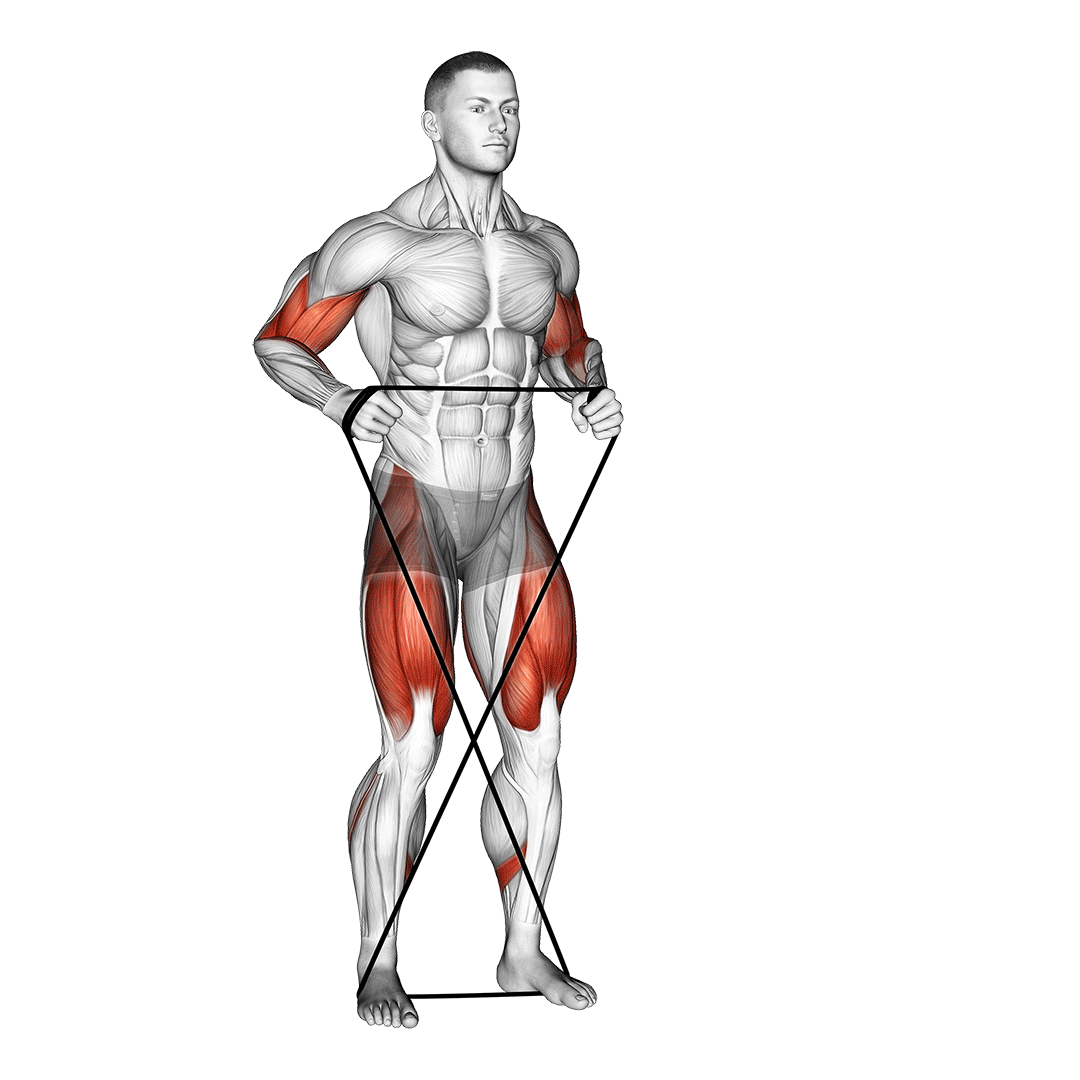
To perform, position the feet hip-width apart. Underneath the feet, loop one end of the resistance band. Grab the other end of the loop with the hands, crossing the band in front of the body that should look like an X. Maintaining the toes pointing forward; take small steps sideward toward one side, keeping the tension on the band. Repeat on the other side.
Benefits of Using a Resistance Band
A resistance band is a great tool for building strength. It is a perfect way to get in some cardio and it can be used for stretching and toning of muscles as well. These can be used for strength training, flexibility training, and more; It is very portable, lightweight, and easy to store in a gym or a closet.
Improves Flexibility
Resistance bands are one of the best ways to increase flexibility. Resistance bands are commonly used in physical therapy, but they can also be used by anyone who wants to improve their range of motion and flexibility. They can be used in a variety of ways, including as a warm-up or cool-down tool, or even as a form of full-body dynamic stretching.
This equipment can stretch out tight muscles easier.
A good example of a stretching exercise with a resistance band is the kneeling quad stretching wherein the resistance band is wrapped around the foot and the other end is pulled by the hand to maximize the stretch on the quads.
Increases Strength
Resistance band training is an easy and convenient way to increase muscle strength and muscle tone. Resistance bands provide a level of resistance against the force of the individual’s body weight. Traditional exercises like push-ups, pull-ups, etc. can be progressed with the use of resistance bands to add even more tension for muscle build-up.
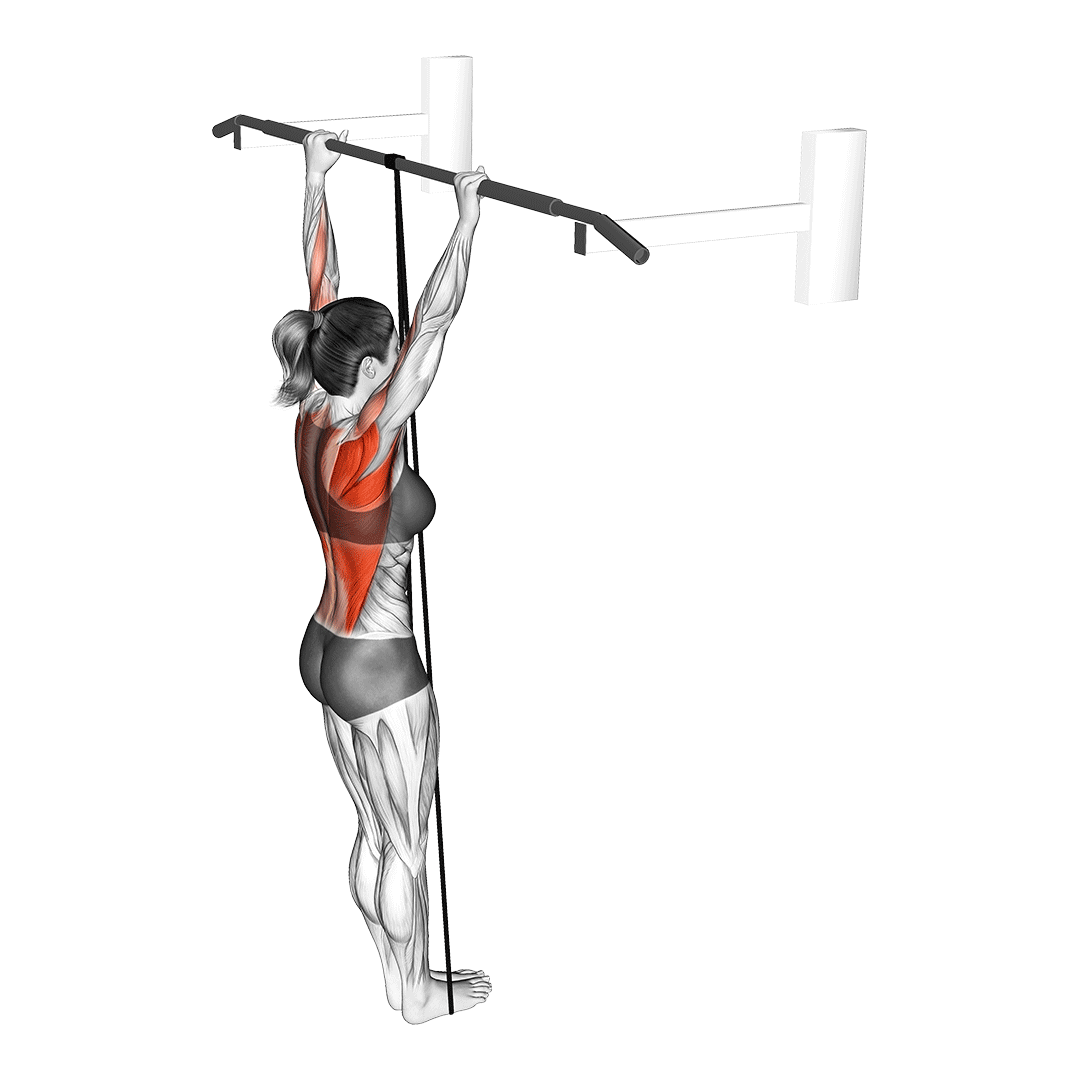
Injury Recovery
Resistance bands are common equipment used by physical therapists to use for post-injury patients.
They're used as a rehabilitation tool to aid patients in getting back into a more active lifestyle. Resistance bands are very beneficial for these patients as they can help with muscle strength, stability, and mobility in a safe manner.
Versatility
Resistance bands are very versatile, as an individual can do close to everything on a resistance band.
May it be bench presses, bicep curls, lateral raises, etc. resistance bands are capable of providing strength training, stretching, calisthenics, and so on; The range of activities to do on a resistance band is endless making it one of the most versatile pieces of equipment out there.
Safety
Resistance bands are perfect tools for exercises as this equipment allows the individual to train in all planes of motion, and at the same time, it does not add any extra impact to the joints and ligaments of an individual, unlike free weights and machines that may lead to injury over time.
Conclusion
In summary, there are countless resistance band compound exercises available to be done by anyone due to the versatility it offers.
Resistance bands offer many benefits such as increases in strength, flexibility, etc. One of the most noticeable benefits that the resistance band offers is that it can be widely used for patients post-injury.
Nonetheless, this does not mean that resistance bands are perfect for everyday use. It also carries some hindrances such as the restriction in the amount of resistance it provides or resistance accuracy, to name a few.
Still, performing compound exercises with resistance bands pack benefits beyond their size.
References
1. Clearwater A. National Federation of Professional Trainers. Published December 18, 2017. Accessed October 11, 2022. https://www.nfpt.com/blog/instructions-resistance-band-deadlift-row
2. Kraemer, W. and Ratamess, N. (2004). Fundamentals of Resistance Training: Progression and Exercise Prescription. Medicine & Science in Sports & Exercise, 36(4), pp.674-688.
3. Ruegsegger G, Booth F. Health Benefits of Exercise. http://perspectivesinmedicine.cshlp.org/content/8/7/a029694.abstract. Published 2022. Accessed October 11, 2022.
4. Joy J, Lowery R, Oliveira de Souza E, Wilson J. Elastic Bands as a Component of Periodized Resistance Training: Ingenta Connect. Journal of Strength and Conditioning Research. https://www.ingentaconnect.com/content/wk/jsc/2016/00000030/00000008/art00004. Published 2016. Accessed October 11, 2022.

